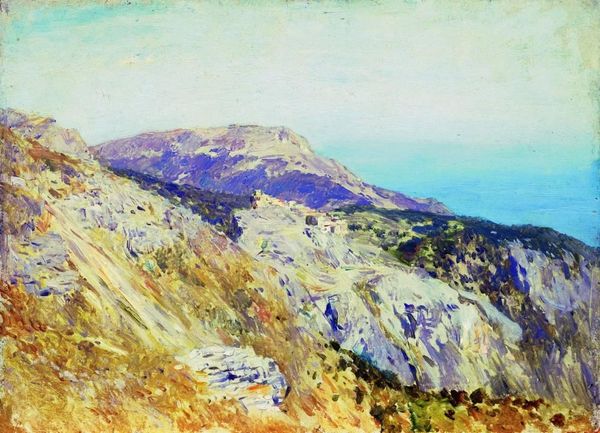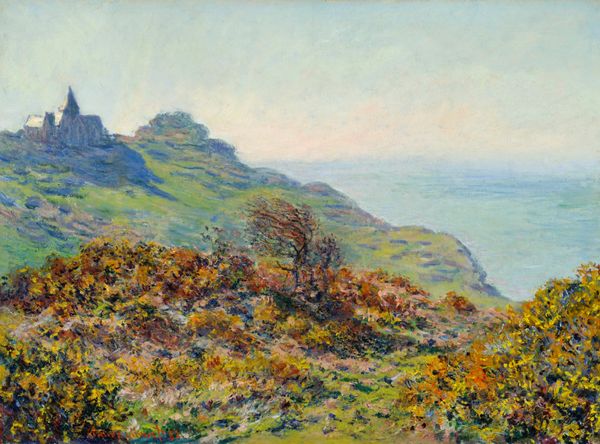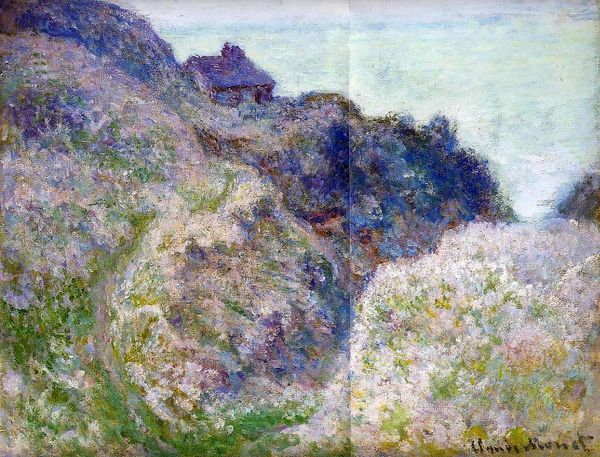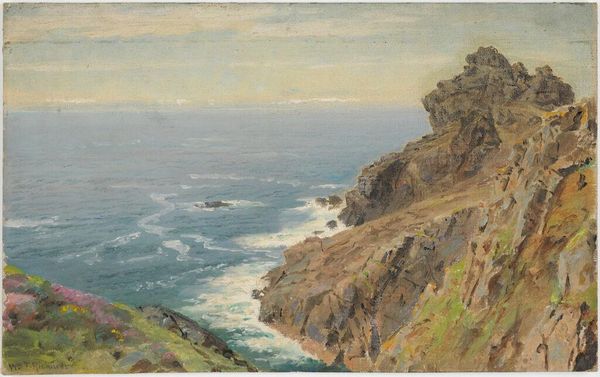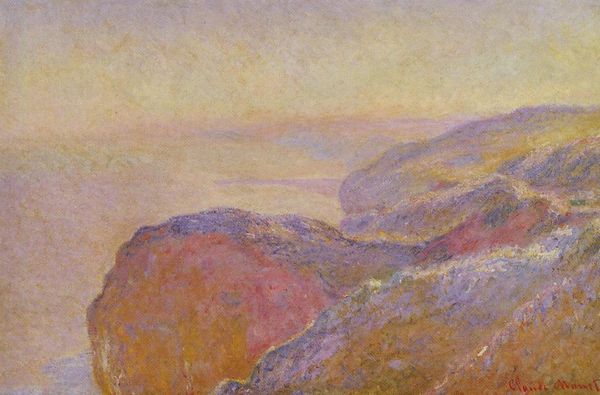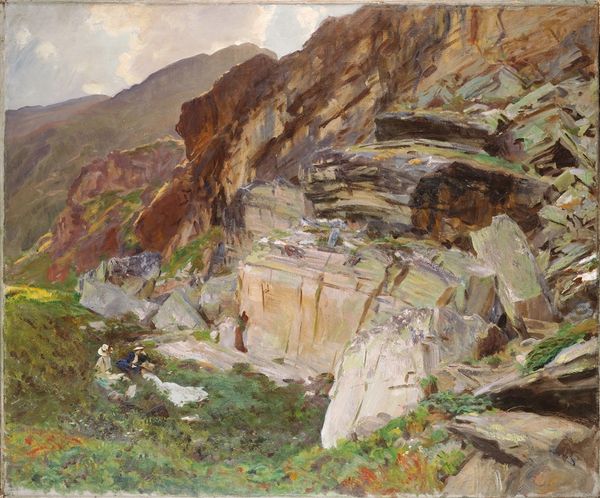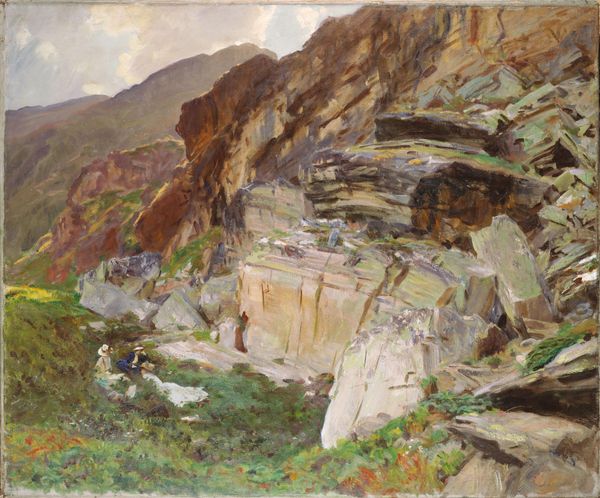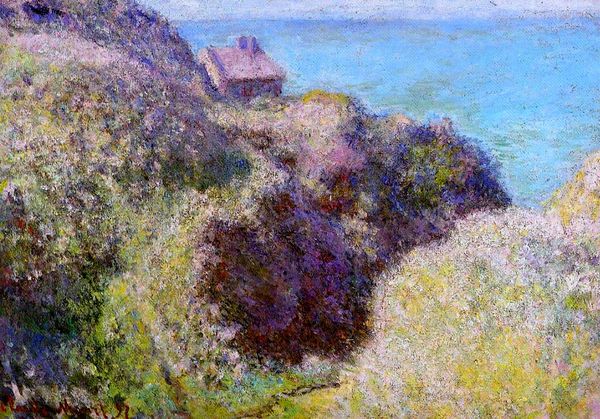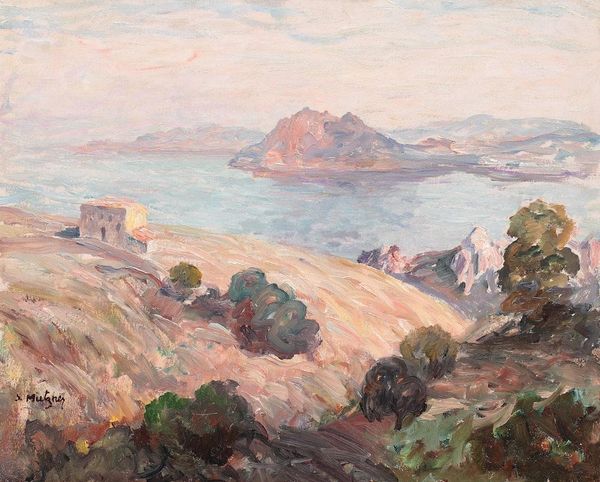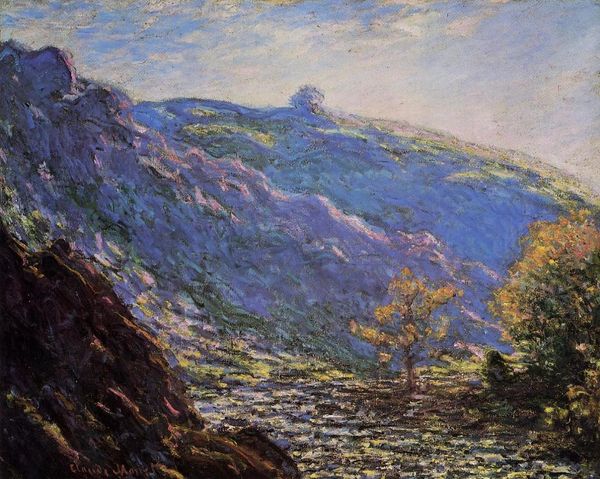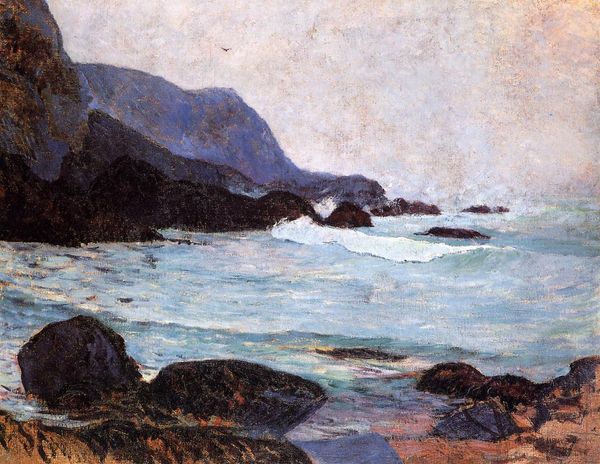
Copyright: Public domain
Editor: So this is "Corniche. Southern France.," an oil painting by Isaac Levitan, from 1895. The scale is quite grand, almost overwhelming. I’m really drawn to the juxtaposition of the rugged landscape and what seems to be a small settlement nestled within it. What elements of composition stand out to you? Curator: Immediately, the dynamic asymmetry is striking. The artist creates visual tension by positioning the cliffs on the left and the village perched on the rocks to the right. Notice how the play of light and shadow sculpts the forms, enhancing their three-dimensionality and directing the viewer’s eye. Editor: Yes, the light! How would you describe the tonal qualities of the landscape? Curator: The muted palette, primarily composed of blues, greens, and browns, establishes a subdued atmosphere. The brushwork varies; observe the loose, gestural strokes defining the foliage juxtaposed with the more deliberate application of pigment articulating the geological formations. These elements contribute to the painting's overall structural integrity. The composition relies heavily on geometric organization. Do you perceive that? Editor: I see what you mean – there’s a diagonal thrust from the lower left to the upper right. And that horizon line is remarkably clean. Is that why we see the piece as very still despite depicting an apparently wild, craggy landscape? Curator: Precisely. The balance within that structural arrangement tempers the Romantic qualities, providing a visual experience of both stillness and monumentality. The artist organizes masses of tonal value around what could be called a stable, relational scheme. Editor: It's amazing how focusing on the structure and light can shift the way you experience a painting! Curator: Indeed. By closely examining the formal properties of the work, one gains a richer, more nuanced appreciation of the artist’s intent and the painting's overall impact.
Comments
No comments
Be the first to comment and join the conversation on the ultimate creative platform.
